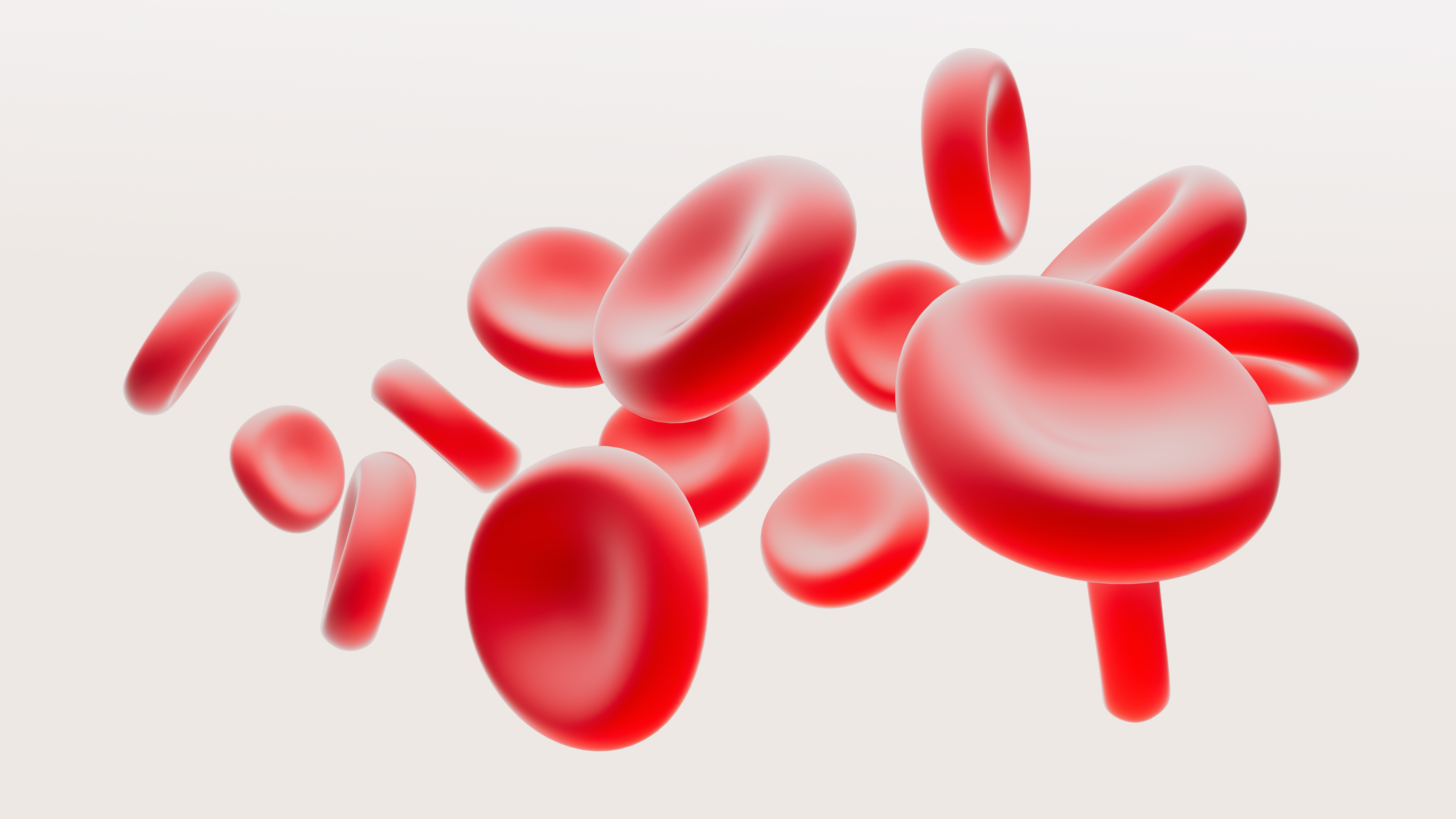Myelofibrosis (MF) is a serious and rare blood cancer affecting 1 in 500,000 people worldwide. It involves the buildup of excessive scar tissue in the bone marrow, which interferes with the production of healthy blood cells.[1]
As the disease negatively impacts blood cell production, certain organs – usually the spleen – attempt to compensate by producing red blood cells. This results in an enlarged spleen, known as splenomegaly, which causes uncomfortable, painful bloating and inflammation. An enlarged spleen can also result in frequent infections and easy bruising.[1]
The reduced availability of normal blood cells may result in a group of symptoms that can affect many different systems of the body, known as constitutional symptoms. These include night sweats, fever, bone or joint pain, an enlarged liver, pale skin and weight loss.[2]
In addition to constitutional symptoms, many MF patients develop severe anaemia.[3] At diagnosis, approximately 40% of patients are anaemic, and nearly all will eventually develop anaemia.[4]
Anaemia occurs when there are not enough red blood cells in circulation, compromising oxygen delivery throughout the body and resulting in fatigue and weakness.[3] Patients with prolonged anaemia often become dependent on blood transfusions, with nearly half of MF patients becoming transfusion-dependent within one year of diagnosis.[5]
Treatments are needed that can have beneficial effects on anaemia and reduce transfusion dependence, while treating MF symptoms and splenic response.[4]
Understanding therapeutic targets
A significant breakthrough in the understanding and treatment of MF was the discovery of proteins known as Janus kinases (JAKs), which are produced by the JAK2 gene. These proteins send signals that influence the production of blood cells in the bone marrow. Around half of MF patients have a JAK2 gene mutation, which has led to this signaling pathway becoming the focus of many currently approved therapies.,[3][6][7]
Recently, clinical studies have evaluated a new approach – reducing a patient’s circulating levels of a protein called hepcidin, a key regulator of iron levels. High hepcidin levels can block iron absorption, causing anaemia. This protein is elevated in MF, but direct inhibition of the activin A receptor, type I (ACVR1) has been shown to decrease circulating hepcidin.[8]
Today’s approved therapies for MF do not address all of the medical needs associated with the condition, leaving patients without solutions for challenging symptoms. However, we are pursuing treatments to address this.
At GSK, we strive to provide treatments that can help patients get ahead of their disease. Utilising this new understanding of MF may one day address the significant medical needs of patients.
References
[1] NIH National Library of Medicine. Primary Myelofibrosis. September 2014. Accessed 5 August 2022. https://medlineplus.gov/genetics/condition/primary-myelofibrosis/
[2] MPN Research Foundation. Primary Myelofibrosis (PMF). 2021. Accessed August, 2022. http://www.mpnresearchfoundation.org/primary-myelofibrosis-pmf/
[3] National Organization for Rare Disorders (NORD). Primary Myelofibrosis. 2018. Accessed 9 August 2022. https://rarediseases.org/rare-diseases/primary-myelofibrosis/
[4] Naymagon L, Mascarenhas J. Myelofibrosis-Related Anemia: Current and Emerging Therapeutic Strategies. Hemasphere. 2017 Dec 20;1(1):e1. doi: 10.1097/HS9.0000000000000001. PMID: 31723730; PMCID: PMC6745971.
[5] Pardanani, A., & Tefferi, A. (2011). Prognostic relevance of anemia and transfusion dependency in myelodysplastic syndromes and primary myelofibrosis. Haematologica, 96(1), 8–10. https://doi.org/10.3324/haematol.2010.035519.
[6] Hu, X., li, J., Fu, M. et al. The JAK/STAT signaling pathway: from bench to clinic. Sig Transduct Target Ther 6, 402 (2021). https://doi.org/10.1038/s41392-021-00791-1.
[7] Bose P, Verstovsek S. JAK Inhibition for the Treatment of Myelofibrosis: Limitations and Future Perspectives. Hemasphere. 2020 Jul 21;4(4):e424. doi: 10.1097/HS9.0000000000000424. PMID: 32903304; PMCID: PMC7375176.
[8] Zhou A, Kong T, Fowles JS, et al. Hepcidin is elevated in primary and secondary myelofibrosis and remains elevated in patients treated with ruxolitinib. BJHaem. 2022 May;197(4):e49-e52. doi.org/10.1111/bjh.18044.




